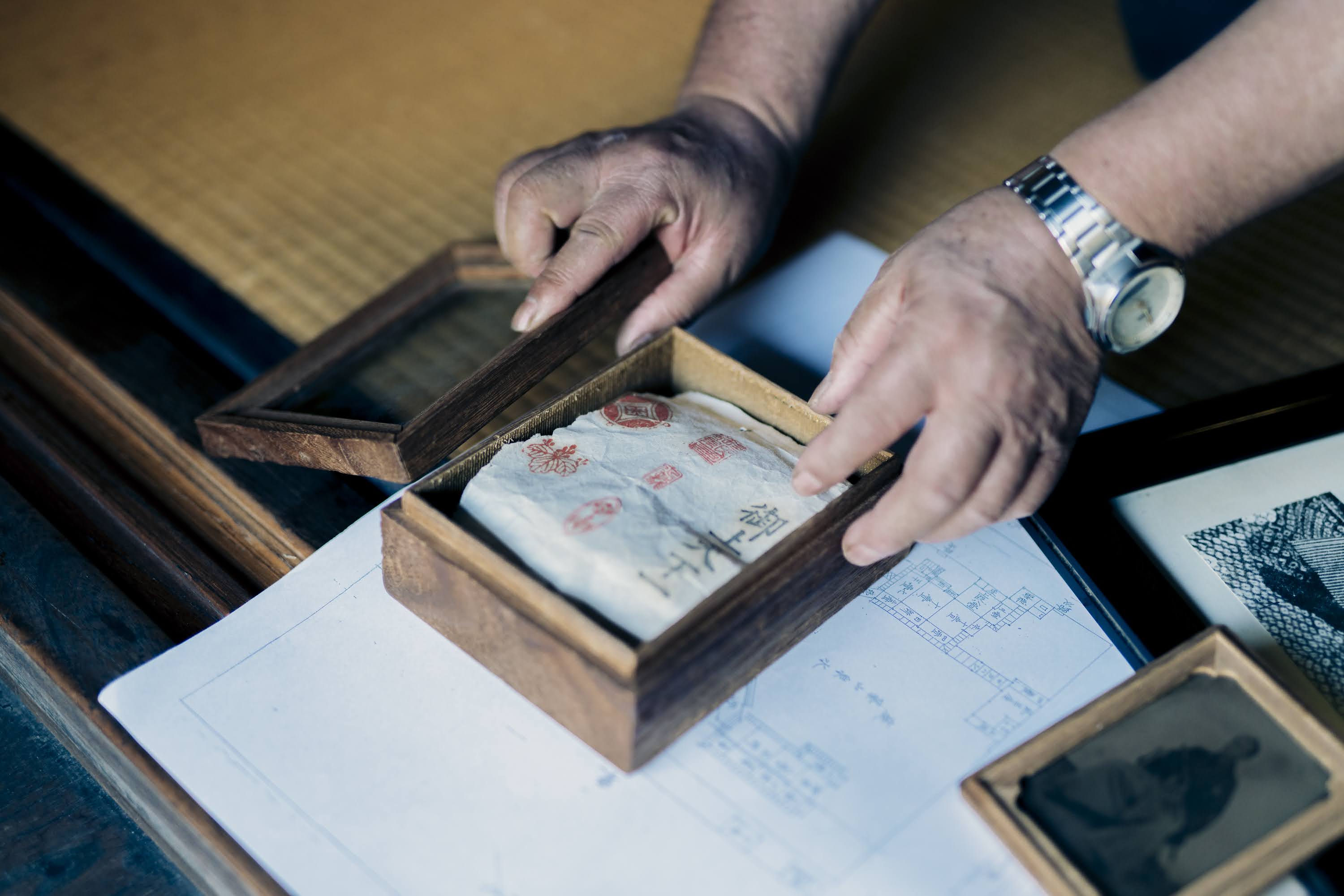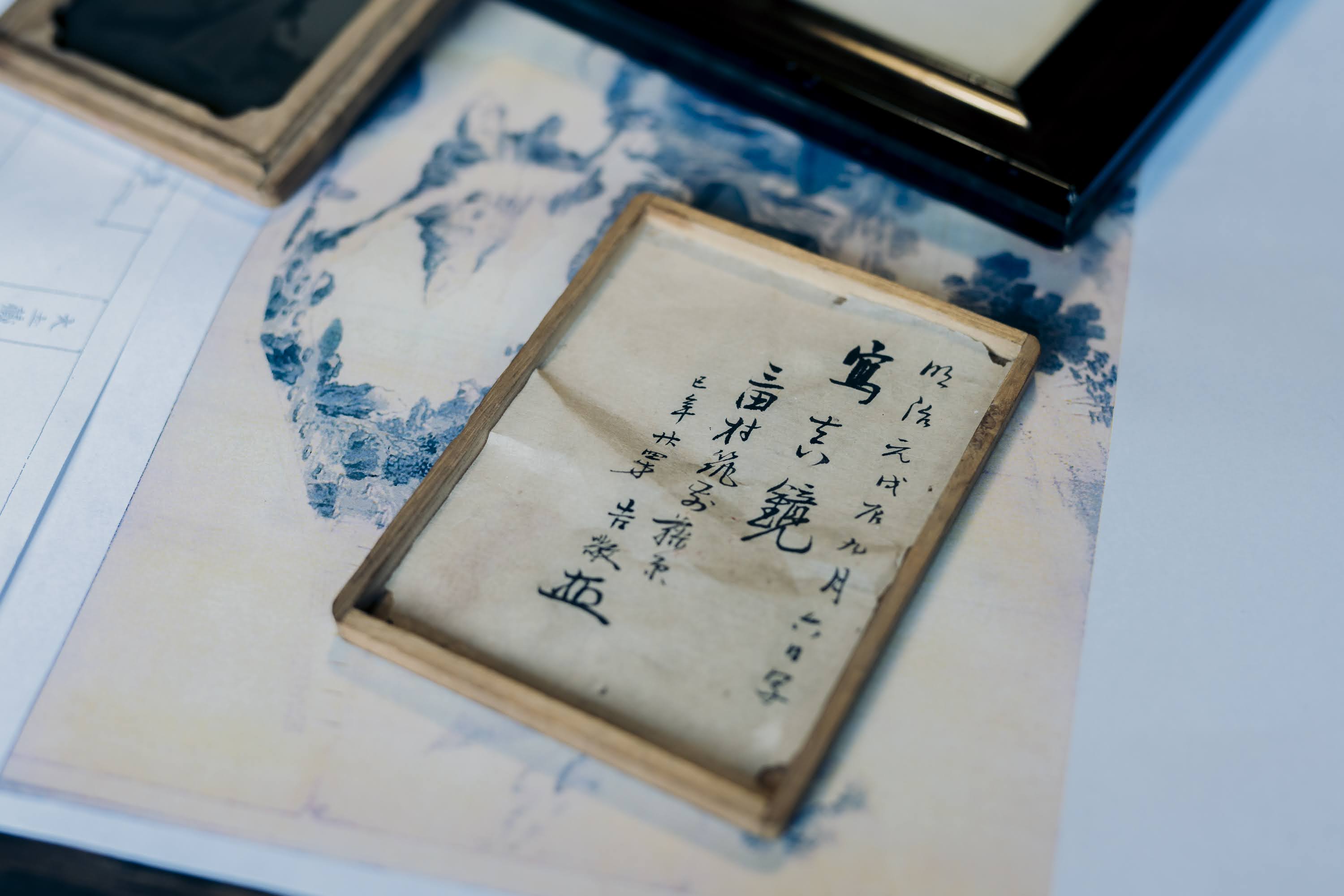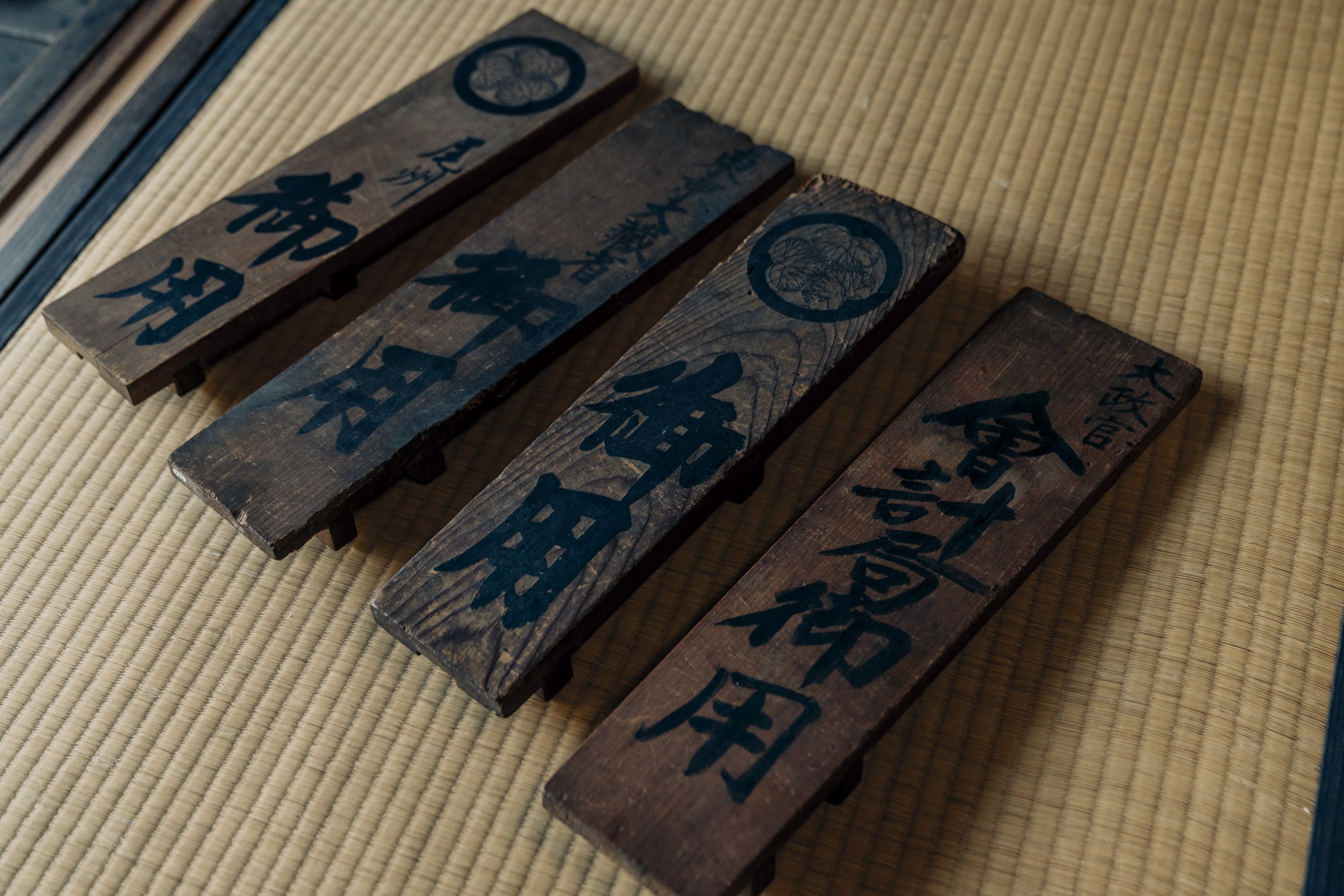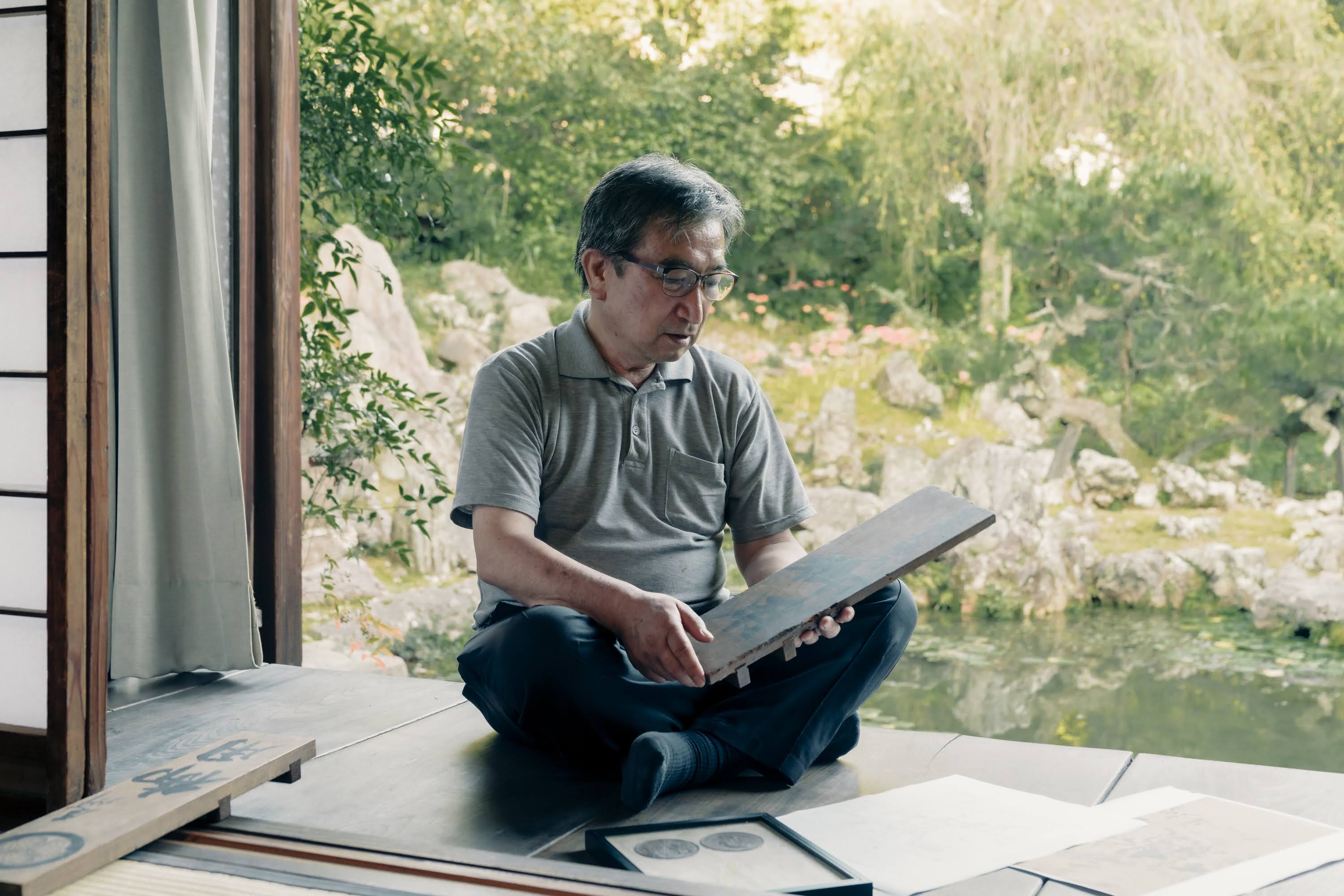Overcoming a period of fierce war
Here are three seals.

These seals signify ownership by the Oda, Toyotomi, and Tokugawa families, respectively.
This is a valuable item that still remains in the Mitamura family, which played the role of papermaker in the Goka area. Why in the world would this place have all the marks of famous military commanders who went through the Warring States period?
This is evidence that Echizen was recognized as an important region even in a world of turmoil, and was invariably protected by successive generations of authorities. For those who ran the country, the land that produced "paper" was a place that could never be despised.

Otaki Shrine (Otakiji Temple) in Imadate, Echizen City, is said to have been the site of the "Kami-za" which was given the privilege by the central government to produce and sell washi paper in the Kamakura period (1185-1333), and produced large amounts of washi mainly in the Goka district (Furo, Otaki, Iwamoto, Shinzaike and Sadatomo).
At that time, "paper" was the latest "device" as we call it today.
Paper contained many functions and important information, and without paper, politics could not work.
Therefore, in the production of paper, quality as well as quantity was important, and production centers needed to have the technology to meet the requests from the central government.
In particular, Echizen washi excelled at a high national level in terms of the precise blending of raw materials and watermarking techniques.
Echizen washi was ordered and encouraged to be produced by the sovereign.
In the Nanbokucho period (1644-1644), Shiba Takanori, the Echizen governor who was a descendant of the Ashikaga clan, ordered Mitamura Sobue, who was the founder of the current Mitamura family, to make "Gokyosho-shii" and offer it to him.
The composition of raw materials was strictly regulated, and Hosho was produced only in selected workshops.In addition, because the documents were important documents related to politics, confidentiality was also strictly managed.
The Asakura clan, which followed the Shiba clan, also had a castle in Ichijodani, but ordered the Mitamura family to become "goyoshishoku" and Otakiji Temple was relieved (guaranteed) of its temple estate by Takakage Asakura, among other exceptional measures.
Fuchu Castle and the town that the great lord kept watch over
After the fall of the Muromachi shogunate and the fall of the Asakura clan, the war for the unification of the country extended relentlessly to the village of Echizen.
In 1575, Nobunaga Oda led a campaign to suppress the Ikko Uprisings in Echizen, and his fires burned down every town and city in the area.At this time, Otakiji Temple, which was enshrined as the "Jingo" of Echizen washi, also lost its shrine building to Takigawa Kazumasu, a warlord who was a vassal of Nobunaga.
However, the town did not disappear.
Sasa Narimasa, Maeda Toshiie, and Fuwa Mitsuharu, vassals of the Oda clan who entered Fuchu as new lords after the arrival of Oda Nobunaga, later became famous as the "Fuchu Sanninshu".
In particular, Toshiie Maeda built Fuchu Castle when he arrived in Fuchu and served as the lord of the castle. Later, he became known to the world as the "founder" of the Kaga Clan of *Hyakumangoku. The area around the current Echizen City Hall was designated as the site of Fuchu Castle, and stone walls from that time have been excavated.In addition, Houenji Temple in Takase, southwest of Fuchu Castle, is known as a temple associated with Toshiie, and there is a memorial tower for Toshiie Maeda's parents in the cemetery.
Even after Nobunaga was defeated by the Honnoji Incident and the ruler was replaced by Toyotomi Hideyoshi, his vassal, Niwa Nagahide, continued to grant the Mitamura family the privilege of the imperial office.

Furthermore, when the Tokugawa shogunate replaced Hideyoshi, Hideyasu Yuki, who had become lord of the Fukui domain, stopped by Fuchu early in the day and ordered his important vassal, Tomimasa Honda, as lord of Fuchu Castle. The Honda family seems to have been a very trusted lord of the castle for the townspeople of Fuchu, so much so that an uproar broke out when the townspeople complained that the Honda family was not welcomed as a noble family at the end of the Edo shogunate.
During the period when the Honda family was lord of the castle, of course, they were still granted the same privileges in the production of washi, and Echizen washi was supplied not only to the Fukui domain but also to the Edo shogunate as well as the Owari domain and the Taisha temple.
*Hyakumangoku means "one million koku of rice" (one koku was considered enough rice to feed one person for a year).
Reliable technology, flexibility, and responsiveness connect us to the future
Echizen Fuchu has been protected by the powers of the time, which have been violently replaced even when the fires of war have been close at hand. Mr. Mitamura of Echizen Paper Mills, a descendant of the Mitamura family, which has been the head of the Goka area for generations, recalls,

"The Goka area has been the center of the paper industry for many years.I think it is precisely because of the concentration of such an important production center as Echizen Washi that Echizen City has remained intact and has not been burned down by various forces. There must have been washi production areas throughout Japan, but I have heard that Echizen washi was chosen because of the technology that allowed the upper management to make the paper according to the formula used, and because of its strong confidentiality management system. It is said that when someone committed the crime of leaking information or creating a fake, it was more than a *Murahachibu. That's how much the entire town must have come together to respond to requests from the outside."
The numerous historical artifacts that still remain in the Mitamura family are also of extremely high value.

"The plans of the mansion at that time show that rooms, a stable, and even a bathhouse were built to welcome the lord. The drawings themselves were also submitted to the clan and the shogunate for protection before the lord arrived. I believe that there were parts that were protected and parts that to be tossed around by the protection of those in power. But the reason we have been able to overcome these various difficulties is that all the craftsmen in this production area have continued to produce paper that meets the needs of the times through friendly rivalry among themselves. In this way, I feel the flexibility and responsiveness of our ancestors in this long-lasting tradition."
The reason why the town was not destroyed despite the entry of many rulers into Fuchu Castle was because Echizen was highly regarded for its solid skills that had been passed down from generation to generation. Even today, the citizens of the town, who inherit its genes, protect Echizen City, and craftsmen continue to make Echizen washi at their workshops, where traditions are passed on and new experiments are repeated daily.
*Murahachibu means he or she will become ostracized from the village when everyone heard what he or she did.
Text / Mikiyo Sato





